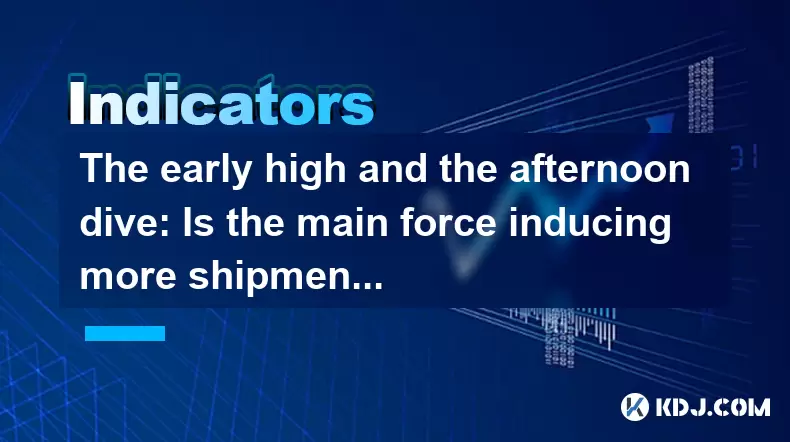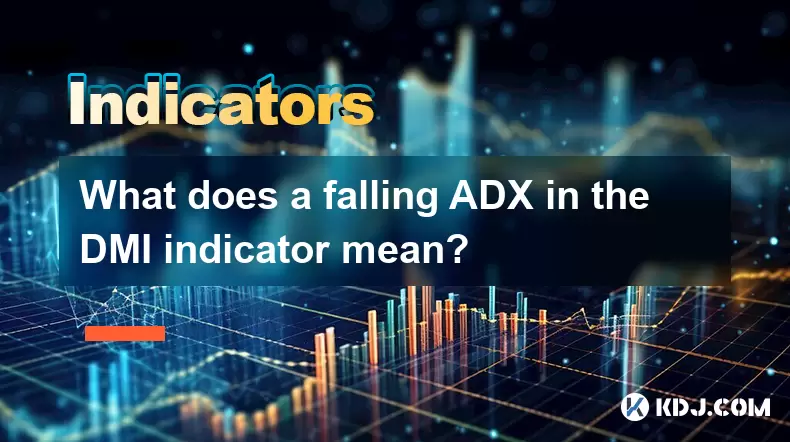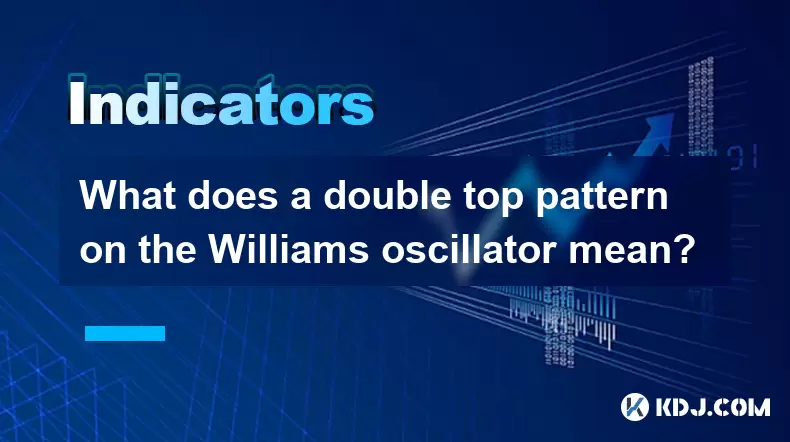-
 Bitcoin
Bitcoin $116700
0.24% -
 Ethereum
Ethereum $3973
4.34% -
 XRP
XRP $3.283
7.68% -
 Tether USDt
Tether USDt $1.000
0.01% -
 BNB
BNB $789.8
2.27% -
 Solana
Solana $176.2
3.31% -
 USDC
USDC $0.9999
0.00% -
 Dogecoin
Dogecoin $0.2238
5.14% -
 TRON
TRON $0.3389
-0.51% -
 Cardano
Cardano $0.7907
4.03% -
 Stellar
Stellar $0.4527
10.02% -
 Hyperliquid
Hyperliquid $41.07
4.27% -
 Sui
Sui $3.794
1.77% -
 Chainlink
Chainlink $19.49
10.40% -
 Bitcoin Cash
Bitcoin Cash $580.9
0.74% -
 Hedera
Hedera $0.2617
4.32% -
 Avalanche
Avalanche $23.41
3.67% -
 Ethena USDe
Ethena USDe $1.001
-0.03% -
 Litecoin
Litecoin $122.4
1.38% -
 Toncoin
Toncoin $3.364
1.49% -
 UNUS SED LEO
UNUS SED LEO $8.988
0.37% -
 Shiba Inu
Shiba Inu $0.00001295
2.82% -
 Uniswap
Uniswap $10.62
5.75% -
 Polkadot
Polkadot $3.922
4.46% -
 Dai
Dai $1.000
0.01% -
 Bitget Token
Bitget Token $4.494
2.15% -
 Monero
Monero $268.0
-1.30% -
 Cronos
Cronos $0.1523
3.68% -
 Pepe
Pepe $0.00001127
4.43% -
 Aave
Aave $285.4
4.85%
The early high and the afternoon dive: Is the main force inducing more shipments?
The early high and afternoon dive pattern in crypto markets may be driven by large investors inducing shipments, as seen in high trading volumes and strategic sell orders.
Jun 01, 2025 at 03:00 pm

The phenomenon of an early high followed by an afternoon dive in the cryptocurrency market has been a topic of intense discussion among traders and analysts. This pattern, often observed in the trading of various digital assets, raises questions about the involvement of the main force or large institutional investors in inducing more shipments or manipulating the market. In this article, we will delve into the mechanics of this pattern, explore potential reasons behind it, and analyze whether the main force is indeed behind these movements.
Understanding the Early High and Afternoon Dive Pattern
The early high and afternoon dive pattern refers to a situation where the price of a cryptocurrency experiences a significant rise in the early trading hours, only to see a sharp decline in the afternoon. This pattern can be observed across various time zones, but it is most noticeable in markets that operate 24/7, such as those for Bitcoin, Ethereum, and other major cryptocurrencies.
The early high often occurs due to a surge in buying activity, possibly driven by positive news, market sentiment, or strategic buying by large investors. This surge pushes the price up, attracting more traders who hope to capitalize on the upward momentum. However, as the day progresses, the afternoon dive takes place, causing the price to fall back down, sometimes even below the opening levels.
The Role of the Main Force
The main force, often referred to as large institutional investors or whales, plays a significant role in the cryptocurrency market. These entities have the capital and resources to influence market movements significantly. The question is whether the early high and afternoon dive pattern is a result of their actions, particularly in inducing more shipments or selling off their holdings.
Large investors may engage in this pattern to take advantage of the market's volatility. By buying early in the day and selling in the afternoon, they can potentially profit from the price fluctuations. This strategy, known as pump and dump, involves artificially inflating the price of a cryptocurrency through coordinated buying and then selling it off at a higher price.
Analyzing Market Data for Patterns
To determine if the main force is indeed behind the early high and afternoon dive pattern, it is crucial to analyze market data. Traders often use various tools and indicators to identify patterns and trends in the market. Some of the key indicators include:
- Volume: High trading volumes during the early high and afternoon dive can indicate significant activity by large investors.
- Order Book: Analyzing the order book can provide insights into the buying and selling pressure at different price levels.
- Price Action: Studying the price action throughout the day can help identify specific patterns and anomalies.
By examining these indicators, traders can better understand the dynamics of the market and the potential involvement of the main force.
Case Studies of Early High and Afternoon Dive
Several case studies can illustrate the early high and afternoon dive pattern and the possible role of the main force. For instance, let's consider a hypothetical scenario involving Bitcoin:
- Scenario: On a particular day, Bitcoin experiences a significant rise in price during the early trading hours, reaching a peak of $50,000. By the afternoon, the price drops to $48,000.
- Analysis: Upon examining the trading volume, it is observed that there was a spike in volume during the early high, suggesting significant buying activity. The order book shows a large number of sell orders placed at the peak, which could indicate that large investors were selling off their holdings.
- Conclusion: This pattern suggests that the main force might have induced more shipments by buying early and selling in the afternoon, capitalizing on the price movement.
Strategies to Navigate the Early High and Afternoon Dive
Traders who are aware of the early high and afternoon dive pattern can employ various strategies to navigate the market effectively. Here are some approaches that traders might consider:
- Monitor Early Market Movements: Pay close attention to the market in the early hours to identify potential early highs. This can help in making informed trading decisions.
- Set Stop-Loss Orders: To mitigate the risk of the afternoon dive, traders can set stop-loss orders at strategic levels to limit potential losses.
- Use Technical Analysis: Employ technical analysis tools to identify key support and resistance levels, which can help in anticipating price movements.
- Diversify Holdings: Diversifying the cryptocurrency portfolio can help spread risk and reduce the impact of sudden price drops.
The Impact of News and Sentiment
News and market sentiment can also play a significant role in the early high and afternoon dive pattern. Positive news or developments in the cryptocurrency space can drive early buying, leading to the early high. Conversely, negative news or shifts in sentiment can trigger the afternoon dive.
For example, if a major company announces its adoption of a particular cryptocurrency, it can lead to a surge in buying activity in the early hours. However, if later in the day, there is a report of a security breach or regulatory crackdown, it can cause the price to plummet, resulting in the afternoon dive.
The Influence of Trading Algorithms
Trading algorithms are another factor that can contribute to the early high and afternoon dive pattern. These algorithms, often used by large institutional investors, can execute trades at high speeds and volumes, influencing market movements.
For instance, a trading algorithm might be programmed to buy a cryptocurrency when certain conditions are met, leading to the early high. Later in the day, if the algorithm detects a change in market conditions, it might trigger a sell-off, causing the afternoon dive.
Frequently Asked Questions
Q: Can retail traders profit from the early high and afternoon dive pattern?
A: Yes, retail traders can potentially profit from this pattern by carefully monitoring market movements and employing strategies such as setting stop-loss orders and using technical analysis. However, it requires a deep understanding of market dynamics and a disciplined approach to trading.
Q: How can one identify the involvement of the main force in the early high and afternoon dive pattern?
A: Identifying the involvement of the main force requires analyzing market data such as trading volume, order book, and price action. High volumes during the early high and large sell orders at the peak can indicate the activity of large investors.
Q: Are there specific cryptocurrencies more prone to the early high and afternoon dive pattern?
A: While the pattern can be observed across various cryptocurrencies, those with higher liquidity and trading volumes, such as Bitcoin and Ethereum, are more likely to exhibit this pattern due to the significant involvement of large investors.
Q: How does the early high and afternoon dive pattern affect long-term investors?
A: For long-term investors, the early high and afternoon dive pattern can be seen as short-term volatility. While it may cause fluctuations in the value of their holdings, it typically does not affect their long-term investment strategy, as they focus on the overall growth and adoption of the cryptocurrency.
Disclaimer:info@kdj.com
The information provided is not trading advice. kdj.com does not assume any responsibility for any investments made based on the information provided in this article. Cryptocurrencies are highly volatile and it is highly recommended that you invest with caution after thorough research!
If you believe that the content used on this website infringes your copyright, please contact us immediately (info@kdj.com) and we will delete it promptly.
- Roman Storm, Funding Effort, and the Looming Defense Retrial: A New York Minute on the Tornado Cash Case
- 2025-08-09 02:50:14
- Crypto's Wild Ride: XRP, Dogecoin, and the Altcoin Surge You Can't Ignore
- 2025-08-09 02:50:14
- Elon Musk, Bitcoin, and the Enduring Power of Approval: A Crypto Love Story?
- 2025-08-09 03:50:15
- Ruvi AI: The Next Big Thing After Ripple on CoinMarketCap?
- 2025-08-09 03:50:15
- Floki Price Surges: Elliott Wave and Fibonacci Setups Point to Potential Gains!
- 2025-08-09 02:30:16
- Pepe Price, RTX (Remittix?) & the $10K ETH Dream: NYC Crypto Chatter
- 2025-08-09 02:30:16
Related knowledge

What does it mean when the TRIX indicator suddenly diverges downward after a long period of convergence?
Aug 09,2025 at 12:56am
Understanding the TRIX Indicator in Cryptocurrency TradingThe TRIX indicator, or Triple Exponential Average, is a momentum oscillator used in technica...

Why is the rise limited after a MACD bottoming divergence?
Aug 09,2025 at 12:07am
Understanding MACD Bottoming Divergence in Cryptocurrency TradingThe MACD (Moving Average Convergence Divergence) is a widely used technical indicator...

What does it mean when the OBV continues to rise but the price is trading sideways?
Aug 08,2025 at 10:35pm
Understanding On-Balance Volume (OBV)On-Balance Volume (OBV) is a technical indicator that uses volume flow to predict changes in stock or cryptocurre...

What does a falling ADX in the DMI indicator mean?
Aug 09,2025 at 03:16am
Understanding the ADX and DMI Indicator FrameworkThe DMI (Directional Movement Index) is a technical analysis tool developed by J. Welles Wilder to id...

What does a double top pattern on the Williams oscillator mean?
Aug 09,2025 at 02:36am
Understanding the Williams %R OscillatorThe Williams %R oscillator is a momentum indicator developed by Larry Williams to identify overbought and over...

What is a nonce and how is it used in Proof of Work?
Aug 04,2025 at 11:50pm
Understanding the Concept of a Nonce in CryptographyA nonce is a number used only once in cryptographic communication. The term 'nonce' is derived fro...

What does it mean when the TRIX indicator suddenly diverges downward after a long period of convergence?
Aug 09,2025 at 12:56am
Understanding the TRIX Indicator in Cryptocurrency TradingThe TRIX indicator, or Triple Exponential Average, is a momentum oscillator used in technica...

Why is the rise limited after a MACD bottoming divergence?
Aug 09,2025 at 12:07am
Understanding MACD Bottoming Divergence in Cryptocurrency TradingThe MACD (Moving Average Convergence Divergence) is a widely used technical indicator...

What does it mean when the OBV continues to rise but the price is trading sideways?
Aug 08,2025 at 10:35pm
Understanding On-Balance Volume (OBV)On-Balance Volume (OBV) is a technical indicator that uses volume flow to predict changes in stock or cryptocurre...

What does a falling ADX in the DMI indicator mean?
Aug 09,2025 at 03:16am
Understanding the ADX and DMI Indicator FrameworkThe DMI (Directional Movement Index) is a technical analysis tool developed by J. Welles Wilder to id...

What does a double top pattern on the Williams oscillator mean?
Aug 09,2025 at 02:36am
Understanding the Williams %R OscillatorThe Williams %R oscillator is a momentum indicator developed by Larry Williams to identify overbought and over...

What is a nonce and how is it used in Proof of Work?
Aug 04,2025 at 11:50pm
Understanding the Concept of a Nonce in CryptographyA nonce is a number used only once in cryptographic communication. The term 'nonce' is derived fro...
See all articles

























































































